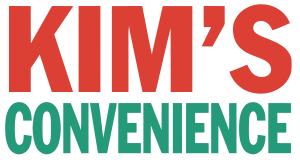GRSJ224/Representation of North American Asians in Television & Film.
Introduction
This page will discuss and expand on the matters about invisibility of Asians and the racial/stereotypes that Asians carry for roles within the film and television industry. There have been a limited portrayal of Asianness on-screen, and have been Westernized for the White audience, where there were many misrepresentations of Chinese culture which has been exoticized as the “other” [1]. The struggle for fair representation within Asian Canadian roles in film and television have been very limited until shows such as Kim’s Convenience, Fresh Off the Boat, or Crazy Rich Asians have began.
Early Representation of Asians
Many times, Asian actors were ignored or automatically treated poorly upon first appearance at film production sites and assumed to be an extra because of their ethnicity and appearance. In a study done by Sun and Starosta, they noted that “Asian appearance may ironically serve as a trigger to be treated as invisible”[2]. From this, the major issue in North American film industry explicitly casts Asians or people of color as extras. In Lee’s article about Margaret Cho, Margaret noticed a major absence of Asians in the film and television industry since she never saw Asians on television but when she did, they were either in the background or portrayed as a certain Asian stereotype [3]. This goes into a notion of invisibility of Asians, in both North American Asian writers or creators and actors[1]. The Asian representation around the 1990’s in North America was near to none, many Asian actors didn’t see ‘themselves’ portrayed on-screen, they didn’t think it was even possible to land roles in the industry[3]
[1]. Since Asians were only casted as extras, it has become a norm, viewing Asians to be inferior to the White actors[3]. This issue of invisibility is problematic for both the viewers and Asians within the film industry. The fact that White actors are getting casted for playing Asian roles displays the exclusion and the little representation for the original identity[4]. For example, Scarlett Johansson being casted for the main role in Ghost in Shell or the example of Mickey Rooney playing an Asian character with exaggerated features[5][6]. These two examples relate to how the film and television industry use racist caricatures and a form of assimilation to insult the Asianness on-screen[5]. Another problem of casting White actors for Asian roles not only whitewashes the content but also makes it harder for Asian actors to represent authenticity and landing roles within the industry, resulting in the industry to be run by the predominantly White culture[5][2]. Guan states that the main reason why casting agents cast White actors instead of Asian actors is because of “a combination of white beauty standards, entrenched stereotypes and the inability to portray the real world as it is”[5]. This goes into the concept of what people are conditioned to think the beauty standards are, thinking that Asians are not the ideal images to portray. Since many Asian actors are not getting the opportunity of being casted for roles, this lessens their experience of practice for potential roles, which can also influence their success of being hired for future jobs. This can lead to a reoccurring vicious cycle for many of the Asians in the performing industry[1]
Stereotypical Asian roles
Some of the main roles that Asians are casted into are something along the lines of sexualizing the exoticness and oriental-like of Asian women, such as “The Dragon Lady” or “The Geisha”, “The Nerdy” or “Weak” describing many of the no fun and unsexy representation of Asian men [7][3][8]. Some other traits portrayed by Asians in roles are being submissive, incapable of being a leader, cute or small, invisible, working as a service worker, always thought to be foreign or international, the highly portrayal of Asians being bad drivers, and the list goes on [8]. All of these stereotypes of Asians show the oppression by the dominating culture of the White culture [8].
Speaking out
https://www.youtube.com/watch?v=35h1HcB5MP8

In the clip Paul Sun-Hyung Lee and Jean Yoon who play “Appa” and “Umma” are asked about their attitudes and feelings towards Kim’s Convenience. The clip shows their proudness of being able to both relate and identify towards Asians and people of color in not just Canada, but North America as a whole. They realized that with a show like Kim’s Convenience, they are able to open and provide more opportunities for Asians, and also a more diverse casting to be on-screen within the industry.
Present - Change
Now in 2018, there are more and more societal changes and movements to transformation the whole concept of Asians seen as the “other”, from being invisible into visible and inclusion, giving more Asians the roles they deserve and a fair representation of Asianness [5]. One major notion provided by Kim to increase the Asianness on-screen is to have more Asian Canadian producers, directors, writers, and performers in the industry [7]. Since the television industry is aware of the ever-changing societal values to keep up with the trends, more shows are featuring Asians to appear or creating new ideas for Asians to be present. Like Kim’s Convenience and VFF also provide more opportunities and influence a positive representation of Asianness on-screen. Especially with the popular and mainstream film like Crazy Rich Asians, where the film also breaks down many stereotypes (Asian men viewed as sexy rather than nerd) and incorporates an all Asian cast featured in the film is very empowering for Asians around the world.
References
- ↑ 1.0 1.1 1.2 1.3 Takeuchi, Craig (October 26, 2016). "Asian Canadian female stars tackle identity and invisibility on Canadian TV". The Georgia Straight. Retrieved Feb 26, 2019.
- ↑ 2.0 2.1 Sun, Wei; Starosta, William J. (2006). "Perceptions of Minority Invisibility Among Asian American Professionals". Howard Journal of Communications: 120.
- ↑ 3.0 3.1 3.2 3.3 Lee, Hyun Joo (Summer 2013). [www.jstor.org/stable/10.13110/criticism.55.3.0423 "Imagining beyond the Here and Now in Margaret Cho's I'm the One That I Want"] Check
|url=value (help). JSTOR. 55: 440. - ↑ Takeuchi, Craig (October 26, 2016). "Asian Canadian female stars tackle identity and invisibility on Canadian TV". The Georgia Straight. Retrieved Feb 26, 2019.
- ↑ 5.0 5.1 5.2 5.3 5.4 Guan, Nancy (July 5, 2018). "Asian Americans Fight Racial Invisibility in Hollywood". ENTITY. Retrieved Feb 26, 2019.
- ↑ Nathoo, Zulekha (April 2, 2017). "Casting controversy, reviews blamed for Ghost in the Shell failure at box office". CBC. Retrieved Feb 27, 2019.
- ↑ 7.0 7.1 Kim, L.S. (2004). "Be the one that you want: Asian Americans in television culture, onscreen and beyond". Amerasia. 30: 144 – via UCLA Journals.
- ↑ 8.0 8.1 8.2 Mukkamala, S; Suyemoto, K.L (2018). "Racialized sexism/sexualized racism: A multimethod study of intersectional experiences of discrimination for Asian American women". Asian American Journal of Psychology. 9 – via APA PsycNET.
- ↑ "Kim's Convenience". CBC. 2018. Retrieved Feb 27, 2019.
